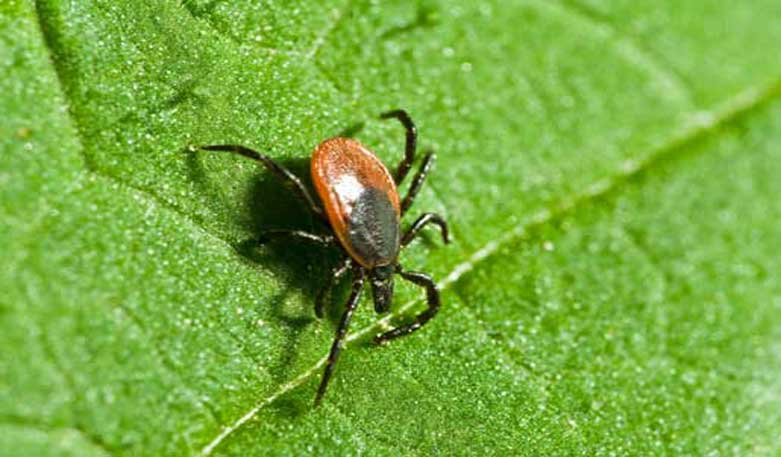The dangerous thing about ticks are the pathogens they transmit. An infection with tick-borne encephalitis (TBE) and Lyme disease can lead to unpleasant complications. The recommended defensive measures such as long clothing and closed shoes, hat and insect repellent provide the first line of prevention. Clothing should be as light as possible so that the ticks crawling on it can be easily seen. All exposed areas of skin should be treated with a tick repellent. What is particularly important are the places where the ticks can transfer from clothing to the skin. But ticks don’t bite right away. First you look for a sheltered spot. They prefer to suck in body folds, the hair area of the head, the back of the knees, armpits or genital area.
Those who are particularly at risk are those who spend time in risk areas such as forests, meadows and fields for work or leisure activities. These include forest workers and foresters as well as hikers, children, mountain bikers, joggers, campers, anglers and mushroom pickers. The stinging act itself lasts a maximum of 15 minutes and is painless due to the anesthetic bite of the tick. Immediately after the bite, the tick is visible as a small black dot. Any pathogens contained in the tick saliva enter the host, and at the same time pathogens in the host’s tissue are sucked into the tick’s intestine with the blood meal. For an infection with the TBE virus, it is not necessary for the tick to suck blood for a long time, but the longer the tick can suck, the greater the likelihood of pathogen transmission. Therefore, the tick must be removed as quickly as possible. What is certain is that it should not be pretreated before removal. With any external irritation, the tick produces more saliva or vomits. This causes more pathogens to be transmitted into the blood. The process is best done with tweezers or special tick tweezers. To do this, place the tweezers as deeply as possible on the skin and pull the tick upwards. After removal, the wound site should be thoroughly disinfected and, in most cases, a doctor should be consulted.
Up to 30% of victims initially experience flu-like symptoms with moderate fever, headaches, body aches and dizziness after an incubation period of 3 to 14 days. After a fever-free interval, one in three sufferers develop secondary diseases such as the typical meningitis with severe headaches and high fever, encephalitis, relapsing fever, and Lyme borreliosis. The cause of TBE cannot be treated. Since only the symptoms are alleviated, the result can be speech and consciousness disorders and, in the worst case, permanent paralysis, which leads to death in around one to two percent of those affected.
The only protection that many people use is vaccinations against the tick-borne disease. The basic vaccination includes three partial vaccinations. Two vaccinations are administered one to three months apart. A revaccination takes place after about a year. The vaccination protection is then effective for at least three years. A refresher should be carried out every three to five years at the latest. Spontaneous vacationers also have the option of rapid immunization. In principle, it is also possible to have children vaccinated against TBE from the age of one.
Further topics on health and medicine
